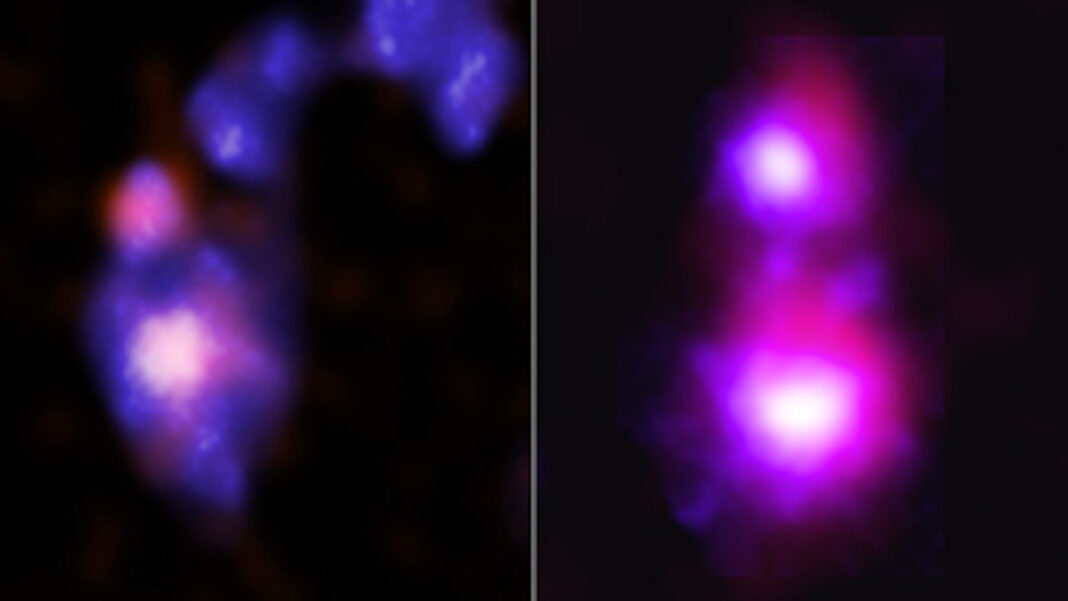UNITED STATES: The first proof that enormous black holes exist has been found by astronomers in dwarf galaxies that are heading in the same direction.
This finding from the Chandra X-ray Observatory of NASA has significant implications for our knowledge of how the first generation of galaxies and black holes developed in the early cosmos.
Recent research found that the huge black holes that each of the pairs of dwarf galaxies have are growing as a result of gas being drawn towards them by collisions between the galaxies.
They will eventually merge into considerably larger black holes as a result of the black holes’ anticipated collision. The galaxies will also combine into one.
The Astrophysical Journal’s most recent edition will feature a paper outlining these findings, and a preprint is accessible online.
By definition, dwarf galaxies have stars with total masses less than 3 billion times that of the Sun, while the Milky Way is thought to have a total mass of 60 billion Suns.
Astronomers believe that some hundred million years after the big bang, the universe was teeming with these “dwarf galaxies.”
Most of them combined with other galaxies in the early universe’s crowded, condensed volume, beginning the process that led to the formation of the more massive galaxies that are now visible throughout the immediate cosmos.
The earliest dwarf galaxies are extremely dim at their great distances, making them impossible to view with modern equipment.
At far closer distances to Earth, astronomers have been able to detect two galaxies that are merging, but neither galaxy exhibits any evidence of a black hole.
The study’s lead author, Marko Micic of the University of Alabama at Tuscaloosa, claimed that “astronomers have discovered numerous instances of black holes on collision paths in massive galaxies that are nearby”.
“Nevertheless, searching for them in dwarf galaxies is much more difficult and hasn’t proven successful to date”, he further added.
By using a systematic evaluation of deep Chandra X-ray observations and comparing them with optical and infrared data from the Canada-France-Hawaii Telescope and NASA’s Wide Infrared Survey Explorer (WISE), respectively, these challenges were overcome in the current work (CFHT).
According to co-author Olivia Holmes, who is affiliated with the University of Alabama in Tuscaloosa, “we’ve detected the first two different pairs of black holes in colliding dwarf galaxies.”
“We can delve into questions regarding the first galaxies, their black holes, and the star formation triggered by the collisions triggered by using these systems as analogues for ones in the early universe”, she further added.
The intricacies of the black hole and dwarf galaxy mergers may provide insight into the history of our Milky Way galaxy.
It is believed that almost all galaxies began as dwarf or other types of small galaxies and evolved over billions of years through mergers.
Likewise, from the University of Alabama at Tuscaloosa, co-author Jimmy Irwin stated, “Follow-up observations of these two systems will let us explore processes that are fundamental for understanding galaxies and their black holes as infants.”
Also Read: NASA’s Perseverance Rover Celebrates Two Years of Exploration on Mars



